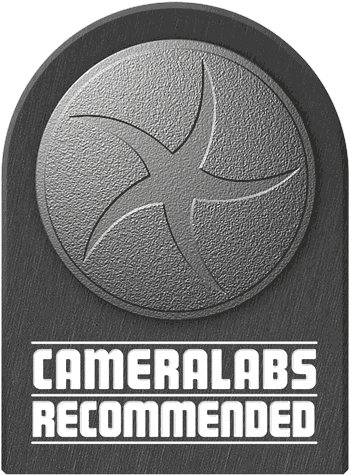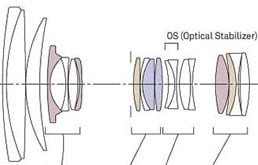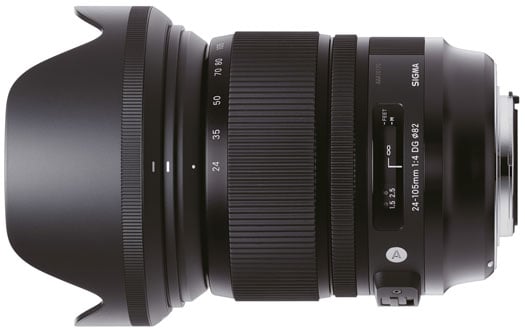Review Sigma 24-105mm F/4 Dg Os Hsm Art Lens for Nikon
Summary
 Sigma'south 24-105mm f4 Art is a new general-purpose zoom lens, available in Canon, Nikon, Sony A and Sigma fits. Mounted on a full-frame camera it delivers an ideal walkaround range from wide angle to short telephoto, or it's equally at domicile on cropped-bodies where it'll deliver coverage equivalent to 36-158mm. Of form it'southward upwardly confronting tough competition from the camera manufacturers themselves who all offer similar or even identical ranges.
Sigma'south 24-105mm f4 Art is a new general-purpose zoom lens, available in Canon, Nikon, Sony A and Sigma fits. Mounted on a full-frame camera it delivers an ideal walkaround range from wide angle to short telephoto, or it's equally at domicile on cropped-bodies where it'll deliver coverage equivalent to 36-158mm. Of form it'southward upwardly confronting tough competition from the camera manufacturers themselves who all offer similar or even identical ranges.
Buy it at present!
Check prices on the Sigma 24-105mm f4 Art at Amazon, B&H, Adorama, or Wex. Alternatively get yourself a copy of my In Camera volume or care for me to a java! Thank you!
Sigma 24-105mm f4 Bone Art review -
- Written past
Intro
The 24-105mm f4 Os is Sigma's second total-frame lens in its Art-serial which (quote Sigma) "offers sophisticated optical performance and abundant expressive power to deliver faithfully on your artistic vision". Blimey.
The first full-frame Fine art lens was the 35mm f1.4 DG HSM which put in some astonishing functioning in the corners of the full-frame sensor (see my Sigma 35mm f1.4 review). So expectations for the new zoom are high regarding optical functioning and likewise build-quality. A focal range from 24mm to 105mm makes information technology a very practical zoom for full-frame bodies covering a pretty wide angle of view up to a calorie-free tele-photo reach.
The lens is bachelor for Nikon, Canon, Sony (w/o image stabilization), and Sigma DSLRs and Sigma offers a unique conversion service should y'all switch your preference for bodies from say Canon to Nikon. Just send your Art lens in to Sigma-service and they tin can catechumen the mount to your preferred new one. The lens is priced effectually 900 USD / 800 EUR which puts Sigma'southward offering beneath Nikon'south 24-120/iv.0G VR at 1000 EUR but conspicuously above Catechism's EF 24-105mm iv.0 L IS USM which currently sells at around 800 EUR. Conversion service for this lens costs effectually 200 EUR which seems like a pocket-sized price to pay considering the cost of a new lens. In my review I'll put Sigma'southward Fine art 24-105mm f4 DG Bone HSM zoom to the test on a Nikon D800 to see how the lens performs on todays highest resolution full-frame DSLR.
| |
Facts from the catalog
Every bit usual I'll take a look at the technical data commencement. I've rated the features with a [+] (or [++]), when information technology's better than average or even state of the art, a [0] if it's standard or just average, and [-] if there's a disadvantage. I'll compare it to Nikon'southward AF-S 24-120/4.0G VR (which I'll but call "the Nikon") and "the Canon" EF 24-105/4.0 Fifty IS USM in this section.
 | |
Size (diam. ten length): 89 x 109 mm (iii.5 x four.three in) w/o lens-hood which is a little larger than the Catechism or the Nikon. But on a full-frame body this lens still has a nice size. [0]
Weight: 885 g (31.ii oz.). This is pretty hefty esp. compared to the Catechism at only 670g. The Nikon weighs 710g. but it adds to the impression of a solid build. [0]
Optics: 19 elements in fourteen groups. That's in the same brawl-park as the competition with 17/13 or xviii/13 lenses/groups. But 14 groups have 28 air/glass-surfaces that produce a lot of opportunities for flares and ghosts. I'll test how prone the lens is to internal reflections. The cross-section shows vii aspherical or (extra-)low dispersion elements. [0]
Closest focus altitude/max. magnification: 0.45 thou (1.5 ft.) / 1:iv.6. In my test I was able to become down to 1:4.3. The Canon and Nikon equivalents offering similar reproduction ratios which comes in quite handy. [0]
Filter-thread: 82mm. So you probably need to go a new set of filters. Canon and Nikon have 77mm filters which are standard on today's professional lenses. [-]
Epitome stabilization: Aye, but like the Canon and the Nikon. At these focal lengths image stabilization really helps a lot. [+]
Automobile focus: HSM (hyper sonic motor), and so it works on DSLR-bodies that don't take an AF-motor built in like Nikon'due south D3x00 and D5x00 series, and also offers manual-focus override past turning the focus ring. The Canon and Nikon offer that too. [+]
Covers total frame/FX or smaller = very good, same every bit the Nikon and the Canon. [+]
Price: around 800 EUR new (incl. 19% VAT) = not as cheap as the Canon but cheaper than the Nikon. [0]
Comes with a nice semi-soft lens-instance that is well padded but has no strap, rear and front lens-cap are included. [+]
Distance data is relayed to the camera, so a Nikon torso can do all the avant-garde exposure-related stuff with this lens eastward.g. with the system flash. [+]
Aperture band: No, just similar all competitors. [0]
Sealing: No. The Canon and Nikon are sealed at the lens-mount. [0]
The score in the "features-department" is 1[-]/7[0]/5[+]. The minus-point being the large filter thread. All-in-all the feature gear up looks OK with a 4.4x zoom, constant f/four.0 aperture and image stabilization beingness the most of import features of this lens, but it's too lacking the sealing of the Canon and Nikon alternatives.
Alternatives
– I've already mentioned the Catechism EF 24-105mm four.0 L IS USM (see Gordon'southward Canon 24-105mm f4 review) which offers similar features plus greater sealing at a slightly lower cost and the Nikon AF-S 24-120mm f/iv.0G VR (see my Nikon 24-120mm f4 review) which has a xiv% longer reach but also costs a scrap more.
– There are likewise shorter alternatives: for Nikon bodies there'due south the Nikon AF-Due south 24-85mm f/3.5-iv.5G VR (encounter my Nikon 24-85VR review) which tin exist had for less than 450 EUR. Or if you adopt the 24-70mm range, there's an f2.8 Nikkor for Nikon bodies, or both f2.8 and f4 versions for Canon's bodies.
– Or you lot consider going longer with a Canon EF 28-135mm f/3.5-five.6 IS USM, a Nikon 28-300mm f/3.five-v.6G VR (see my Nikon 28-300VR review) or a Canon EF 28-300mm f/3.5-5.6 L IS USM which is a serious slice of gear not actually comparable to the other lenses size-, weight-, and price-wise.
Focus, build quality, and image stabilization
Focus accuracy and repeatability is critical to consistently produce sharp shots. Repeatability (the accuracy of focus on the aforementioned bailiwick later on repeated focus-acquisition) of this lens is first-class with no outliers over a series of twoscore shots. And there is no performance variation whether the lens focuses coming from infinity or from minimum focus distance. The lens mostly focuses very fast at effectually 0.5 sec from infinity to 1m. Only sometimes it overshoots the target and hunts a bit but still manages to find focus in a round 0.7 seconds.
The lens' AF tin be fine-tuned with Sigma's Optimization Pro software that besides doubles up equally a fashion to update the firmware of the lens. You get a total of 16 individual points to fine-tune AF: for 24mm, 50mm, 70mm, and 105mm focal length and for distances of around 45cm, 0.9m, 2m, and infinity. Simply put the lens in the USB-dock and tune away. Unfortunately there was no time during my test period to try-out this unique tool.
The focus ring has no slack/play between its movement and the focus-action and a throw of around 90 degrees, which is a chip short at the long terminate for accurate focus broad open up. The focus ring is extremely pocket-sized with simply 6.5m of rubberized surface simply movement is pretty polish equally is the zoom activity. Both the focus-ring and the zoom-ring plow the aforementioned mode as Canon zooms. Unfortunately that is the reverse direction to what Nikon users have come to look. AF-operation is pretty quiet on the outside, and if you tape video with the built-in microphone focus-movement produces only a slight "clack" at the offset of the movement and little other noises. The operation of the prototype-stabilization is inaudible.
Shaking the lens does produce some noise. But autonomously from that the general impression of build quality is pretty high: A high quality metallic/plastic construction and nine rounded aperture blades. And the double-barrel zoom design can merely be moved slightly from side to side when fully extended to 105mm focal length.
To exam the effectiveness of the image stabilization I did a series of over 140 controlled exam-shots paw-held at 105mm focal length. Around one-half of those were with Os=OFF at 1/100 of a second and the other half was with Os=ON and shutter-speeds that were 4 – 8 times slower. Later rating the sharpness of those images at 100% magnification on a scale from 0 to 5 I compared the samples with shorter shutter speeds and Os=OFF to those samples with longer shutter-speeds and Os=ON. I can written report that the OS is good for around three stops of stabilization, that is the set of shots at 1/12 sec were on average equally sharp as the set of shots at 1/100 sec. This is a very good event and makes the images stabilization of this lens a very useful characteristic.
Now it'southward time to check out the results in my Sigma 24-105mm f4 Os quality and Sigma 24-105mm f4 OS sample images pages, or if you'd like to skip to chase, head straight for my verdict!
Pages: 1 two 3 4
Source: https://www.cameralabs.com/sigma_24-105mm_f4_dg_os_hsm_art/

0 Response to "Review Sigma 24-105mm F/4 Dg Os Hsm Art Lens for Nikon"
Enregistrer un commentaire